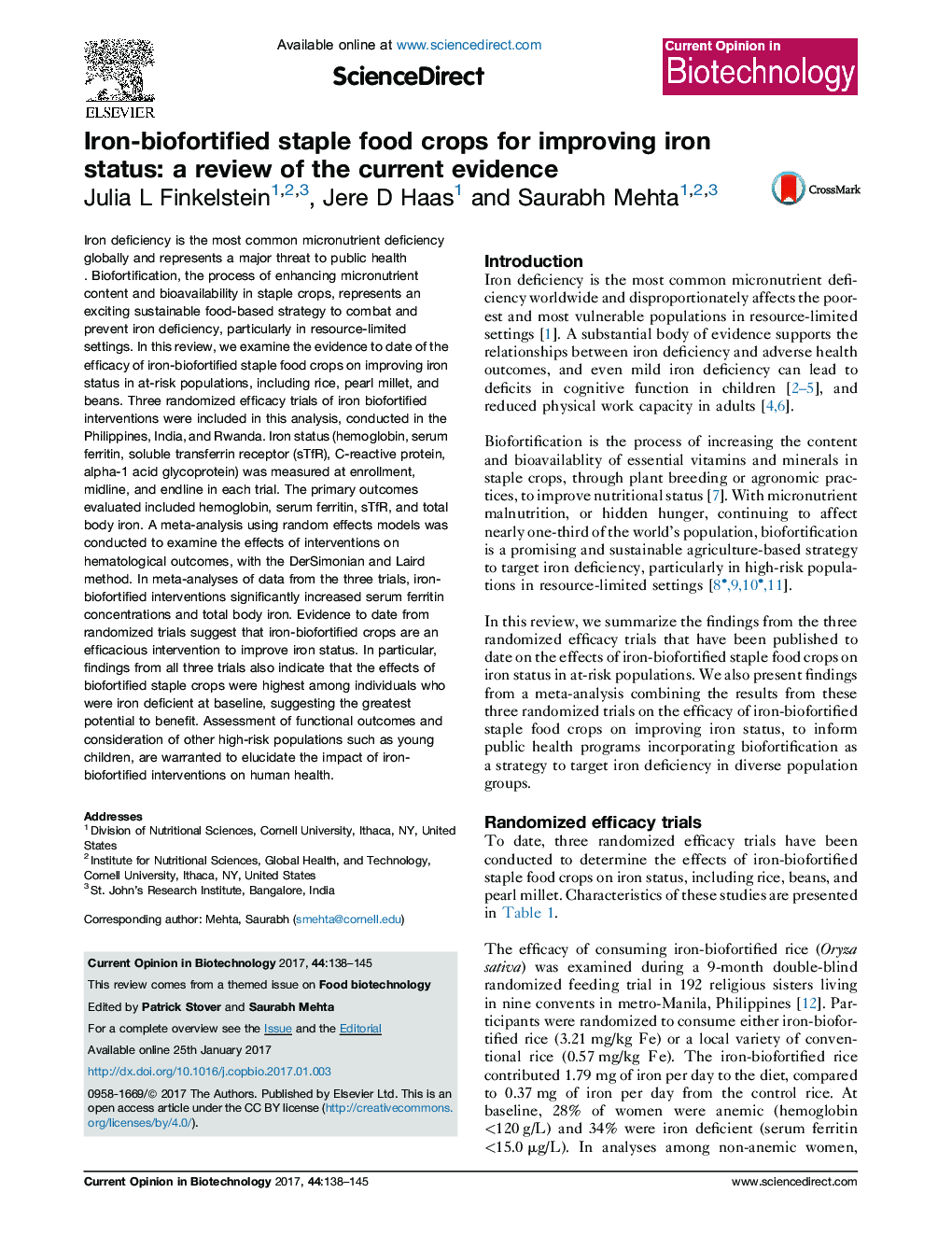| Article ID | Journal | Published Year | Pages | File Type |
|---|---|---|---|---|
| 6451555 | Current Opinion in Biotechnology | 2017 | 8 Pages |
â¢Iron deficiency and anemia are major threats to public health worldwide.â¢Biofortification is a promising and sustainable strategy to target iron deficiency.â¢Three randomized efficacy trials of iron-biofortification have been conducted to date.â¢Iron-biofortification improved iron status, with the greatest effects in iron deficient individuals.â¢Future trials are needed to assess the effects on functional outcomes and in other high-risk populations.
Iron deficiency is the most common micronutrient deficiency globally and represents a major threat to public health. Biofortification, the process of enhancing micronutrient content and bioavailability in staple crops, represents an exciting sustainable food-based strategy to combat and prevent iron deficiency, particularly in resource-limited settings. In this review, we examine the evidence to date of the efficacy of iron-biofortified staple food crops on improving iron status in at-risk populations, including rice, pearl millet, and beans. Three randomized efficacy trials of iron biofortified interventions were included in this analysis, conducted in the Philippines, India, and Rwanda. Iron status (hemoglobin, serum ferritin, soluble transferrin receptor (sTfR), C-reactive protein, alpha-1 acid glycoprotein) was measured at enrollment, midline, and endline in each trial. The primary outcomes evaluated included hemoglobin, serum ferritin, sTfR, and total body iron. A meta-analysis using random effects models was conducted to examine the effects of interventions on hematological outcomes, with the DerSimonian and Laird method. In meta-analyses of data from the three trials, iron-biofortified interventions significantly increased serum ferritin concentrations and total body iron. Evidence to date from randomized trials suggest that iron-biofortified crops are an efficacious intervention to improve iron status. In particular, findings from all three trials also indicate that the effects of biofortified staple crops were highest among individuals who were iron deficient at baseline, suggesting the greatest potential to benefit. Assessment of functional outcomes and consideration of other high-risk populations such as young children, are warranted to elucidate the impact of iron-biofortified interventions on human health.
Graphical abstractDownload high-res image (175KB)Download full-size image
